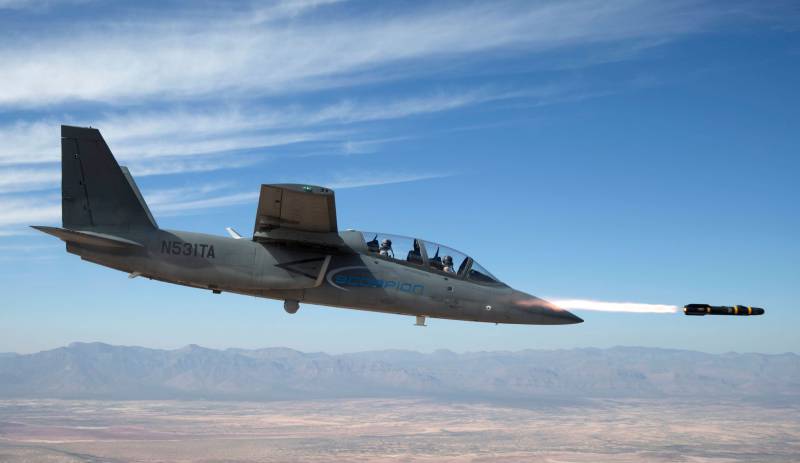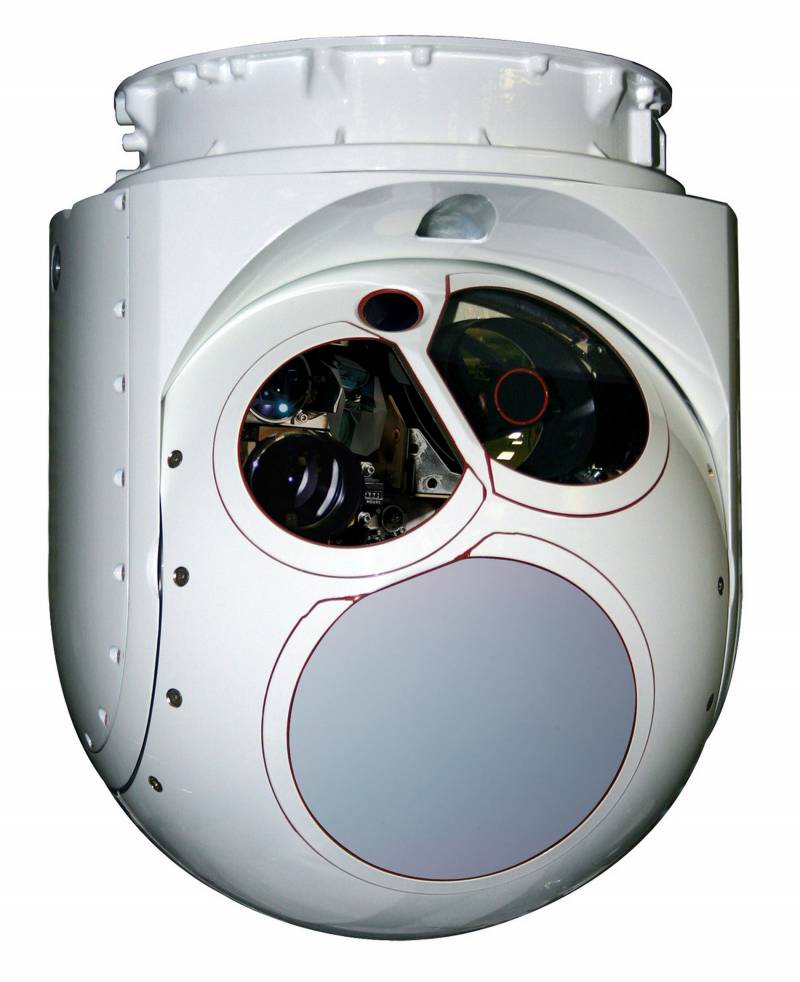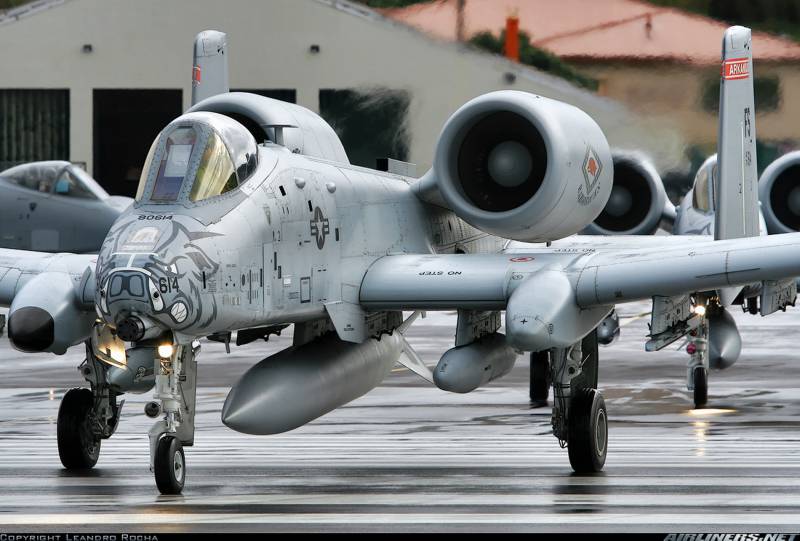Is the light attack aircraft “Scorpion” ready to replace the fleet of anti-tank Thunderbolts?
Reflections and disputes in the defense departments of Russia and the United States regarding the replacement of aging Su-25 and A-10A / C attack aircraft continue to this day. Initially, this issue was very tightly puzzled by the US congressmen and the US Air Force commanders who intended to pass a law banning further funding for the maintenance and upgrading of Warthogs in order to increase allocations for more important programs related to the maintenance and upgrading of 5 generation F network centric machines F -35A, tactical multi-purpose fighter F-16C, shock unmanned aerial vehicles "Reaper" and other promising machines. Then similar opinion was expressed by the commander-in-chief of the Russian Aerospace Forces Colonel-General Viktor Bondarev, who informed the RIA "News»About the future replacement of the Su-25“ Grach ”attack aircraft and its modifications with high-precision Su-34 front-line fighter-bombers.
But if the likely replacement of the Rooks with Fulbacks looks even more or less justified, then the replacement of Warthogs with Falcons and Lightnings does not at all correspond to the methodology for applying the modern assault aviation. For example, the Su-34 has both the features of a modern fighter-interceptor, anti-ship and anti-submarine aircraft, and the features of an attack aircraft. For this, the cockpit of two pilots is made in the form of a titanium armored capsule that protects against damage from fragments of shells and large-caliber machine-gun shells when flying in the envelope mode. Neither the F-16C Block 60 nor the F-35A possess such qualities: any attempt at low-altitude dominance over enemy armored vehicles can result in defeat even from simple anti-aircraft gun systems. The lack of booking a cabin in most cases will lead to the death of the crew. Moreover, subsonic A-10A / C with a direct wing have a significantly smaller turning radius at minimum speeds, which is very convenient for quick maneuvering and access to the fire trajectory in a small "active" section of the theater of war. None of the tactical fighters available in the US Air Force possess such capabilities.
In the US Air Force, this was quickly realized and the question of writing off Warthogs was excluded from the agenda. However, after 2028, all the A-10A / C attack aircraft will be removed from the Air Force, and this niche will have to be taken by completely different machines. It is likely that promising attack aircraft will be unmanned, but during the transitional stage, manned vehicles will be required, one of which is now entering the stage of testing a weapon system.
According to the information published by 21 in October 2016 of the year on the page of the analytical resource “Military Parity”, the light attack aircraft “Scorpion” performed the first launches of air-to-ground missile weapons against ground targets. The tests used 70-mm NURS "Hydra-70", tactical anti-tank missiles AGM-114F "Hellfire", as well as light air class "air-ground" APKWS ("Advanced Precision Kill Weapon System"), developed by BAE Systems . These missiles are the basis for armament of Apache attack helicopters, and if used on the Scorpion, the arsenals for helicopter and attack aircraft will be fully unified, which will allow the Scorpion from the Apache to be replenished in combat conditions, and vice versa. But is the lightweight Scorpion attack aircraft capable of completely replacing the heavy A-10A / C?
Let's start with the fact that the first prototype, which looks like an ordinary lightweight shock combat training aircraft “Scorpion”, passed most of the assembly stages in an atmosphere of strict secrecy at the Cessna plant in Kansas from 2012 to 2013. Cessna Aircraft Company, together with the helicopter engineering Bell Helicopter, forms the backbone of the Textron AirLand conglomerate, which is the manufacturer of the new attack aircraft. Both companies have solid experience in the development and production of transport and attack helicopters and airplanes, and therefore the promising Scorpion has received a very perfect pedigree.
The glider of the aircraft, designed according to the “high-wing” scheme, has a straight, high-lying rectangular wing with a span of 14,43 m and an area of about 27 м2. This ensures normal wing loading (with 9350 mass) within 346 kg / m2, due to which a good angular speed of turn is realized when performing combat maneuvering at low altitudes. At the root of the wing there are small angular flows, which maintain a stable flight, even at high angles of attack. Apparently, the direct wing of the Scorpion is a tribute to the American projects of training and combat aircraft 60-70-s: the project could be taken from a two-seater attack aircraft from the Cessna A-37 "Dragonfly", which was in service with the Air Force US 1967 to 1992 year. The remaining constructive elements have nothing in common with Dragonfly, and some of them in general belong to the 5 generation of tactical aircraft.
Oval wing air intakes are similar to F / A-18C "Hornet"; their form has nothing to do with the “stealth” concept, but the use of radio-absorbing materials and coatings in the execution of the edges may well remedy the situation. But a small effective reflective surface of the edges is provided only at large viewing angles of the enemy radar relative to the roll of the Scorpion. If the irradiation of the radar or ground radar falls into the front projection of the attack aircraft, then the signal will be reflected from the compressor blades of the Honeywell TFE731 turbojet engines, since the air channel in the aircraft nacelles is straight and has no geometric displacements. This can be considered a serious disadvantage in terms of the radar invisibility of the attack aircraft.
A plus is the original design of the tail assembly “Scorpion”, where vertical stabilizers have “stelsovsky” 20-25-degree camber, which provides the maximum deviation of electromagnetic radiation. The cockpit canopy is a two-cover, large area, and has an excellent overview in almost all hemispheres. But in this lie some drawbacks. So, he is very vulnerable even to small caliber small arms. The A-10A flashlight, for example, has an 3 binding band and a much smaller area, which gives additional protection during shelling. To increase the strength of the lamp will require a more complex and massive binding.
The nose of the fuselage, in contrast to the Thunderbolt, is pointed and conical, which, after modernization, can be represented by a radio transparent radome with the latest versions of AFAR radar stations and synthetic aperture mode for searching, tracking and destroying ground and air targets. The A-10A / C attack aircraft had a suspension container with a Westinghouse WX-50 radar for this purpose, but this product did not advance further than the project. The AN / AAS-35V "Pave Penny" optical-electronic sight was the basis of the weapon control system, designed to capture ground-based and air-based targets illuminated by laser target indicators. Also, the TV / IKGSN tactical missiles AGM-65B / D "Maverick" perform the role of optical-electronic systems for detecting and capturing targets in the television and thermal imaging channels of sight. Under difficult meteorological conditions, the Warthogs have serious limitations in combat use without overhead radar. Winginghouse WX-50 allowed attack aircraft to fly in the following mode of terrain at heights 150 — 200 m in rain and fog.
The main "chip" light attack aircraft "Scorpion" is its internal compartment of weapons, which can be placed up to 1400 kg of missile-bomb weapons. Provided that the attack aircraft receives a radar of an active phased array, any air-to-air missile or an RLRD can be integrated into its SUV, which can be placed in the internal compartment. This detail tells us about the direct attitude of the “Scorpions” to the cars of the transitional and 5 generations. More 2800 kg of weapons can be placed on 6 external suspension points under the wings.
A lot of interesting technical solutions are waiting for customers in the construction of important units of the Scorpion attack aircraft. Thus, the power plant, based on the base of two “Honeywell TF731” turbojet engines with a total 3600 kgf thrust, has spaced engine nacelles, due to which the survivability of the aircraft in difficult combat conditions increases dramatically. The engines themselves are modifications of the TFE731-5BR twin-circuit turbojet engines installed on Hawker-850XP administrative aircraft; the flaps and aileron drives are borrowed from the Cessna 560XL Citation Excel and Cessna Citation X light jet passenger business jets, respectively. Due to the unification of the main controls of the Scorpion with the civilian aviation sector, the cost of the flight hour has sharply decreased, which amounted to only about 3 thousand dollars against 12 thousand dollars from the A-10A attack aircraft. For the treasury the car is much more profitable than the heavy "Warthog."
Initially, Scorpion was planned as a light strike aircraft for direct support of troops in local military conflicts, for patrolling sea and land frontiers, and also in order to combat drug trafficking. But the installation of the on-board radar and the presence of the second pilot-operator indicates a much wider range of tasks. To display information about the tactical situation, navigation data (including a digital TV map) and information on the status of the attack aircraft’s systems and weapons, the pilot’s dashboard has an 2 widescreen MFI with vertical orientation (in the center and on the right of the dashboard), display artificial horizon; at the top left is a compact monochrome indicator, apparently for displaying information from the radio station, as well as devices that provide tactical information exchange with other units. A similar, duplicated information field surrounds the second pilot-operator, thanks to which all the tasks of controlling the radar, optoelectronic systems, EW complex and armament can be transferred from the pilot to the pilot during the course of a long-term air operation.
It is most likely that the Scorpions will receive hardware and software for transmitting tactical data to the AH-64D Apache Longbow attack helicopters, as well as controlling unmanned strike helicopters. drones type MQ-9 "Reaper", which will make their work on the theater faster and more efficient. In addition to the airborne radar, the Scorpions are equipped with a ventral optoelectronic sighting system of the MX-15i "True HD" type in a spherical rotating turret.
The Mx-15i complex is represented by:
- A standard thermal imaging sensor (Thermal imager) with a resolution of 640x512 pixels with a cooled infrared matrix based on indium antimonide, optical zoom is about 50X;
- a high-resolution thermal imaging sensor (High defenition thermal Imager) with a similar cooled matrix, but with a resolution of 1280x1024 points; 30-multiple approximation of optics makes it possible to classify and identify a frigate of a supernova 50 km in a normal meteorological situation;
- color TV viewer of increased photosensitivity (Color low-light continuous zoom) with HD and FullHD resolutions;
- standard daytime HD / FullHD-TV viewfinder (Daylight step-zoom spotter);
- laser rangefinder (Laser rangefinder, - LRF) with a range of 20 km and accuracy range +/- 5 m;
- laser target designator with a wavelength of 860nm and power from 350 to 750mW.
The height of the module-turret is about 48 cm with a mounting platform, and the diameter is about 39 cm, its weight with additional control equipment and mechanical rotation drives is 42,7 kg. The MX-15i "True HD" has synchronization buses with the MIL-STD-461 / 810 OMS. This complex fully meets the requirements of a promising attack aircraft of the XXI century.
The integration of the Hellfire missiles speaks about another important advantage of the Scorpion light attack aircraft: the nomenclature of guided missiles for this aircraft will include multi-purpose JVM URVZ with a range of up to 28 km. The work on the product was carried out by the Raytheon-Boeing and Lockheed Martin consortia, while the latter was able to achieve real breakthrough results. The Lakhidov JAGM destroyed a truck moving at a speed of 35 km / h at a distance of about 8,5 km at the Daguay range. Excellent capabilities for the destruction of moving targets are realized thanks to the 3-channel homing head, which combines infrared, semi-active laser and active radar homing. Thus, the active radar homing channel of the millimeter-wave range (the same is used on the MBDA “Brimstone” related rocket) completely eliminates a miss if the enemy’s ground unit uses an opto-electronic countermeasure system or sets up a smoke screen. Semi-active laser and infrared channels, on the contrary, minimize the accuracy of hitting the target, which leads the electronic warfare. The small starting mass (48,9 kg) and the length of 1,8 m, allow even the suspension points of the light Scorpion to take an arsenal of more than JNMX 10-12 missiles deployed on modernized BRU-33 launchers.
A decent drawback is the lack of a powerful rapid-firing aircraft gun of the GAU-8 / A type, which with its 30-mm armor-piercing shells PGU-14 / B is capable of "breaking through" the armor plates of the upper projection of almost any modern main battle tank. However, this attack aircraft is not intended to be equipped with such powerful cannon mounts, since their mass, together with the ammunition and the projectile feeding system, often exceeds 1500 kg, and this is already more than half of the very "scarce" combat load. At the same time, let’s not forget that even in the context of network-centric wars of the 23st century - a century where hypersonic missile weapons will go far ahead in comparison with most standard supersonic airborne reconnaissance aircraft, air guns will continue to play a serious role in shock combat operations, since any modern ATGM is very it is easy to intercept promising active defense complexes (KAZ), or military air defense systems, which in no way applies to simple armor-piercing shells with EPR in ten thousandths of a square meter. Aircraft guns for "Scorpion" can be made in the form of hanging containers such as SUU-XNUMXA, etc.
Now we will consider the main tactical and technical characteristics of the Scorpion attack aircraft. The maximum speed of the prototype of a promising light attack aircraft is about 830 km / h, which does not distinguish it from heavy A-10A / C. The practical ceiling on the 300-500 m exceeds the performance of Thunderbolt and is 14 km; Combat range with full suspension around 900 - 1200 km, which is approximately 2 times more than the A-10A / C. The thrust at the maximum take-off weight of these machines is the same, and is approximately 0,36.
At the same time, the average and maximum combat loads of the “Warthog”, constituting 5,4 and 7,3 tons, respectively, are equivalent to the empty and normal take-off masses of the “Scorpion”, which gives significant advantages in the mass of weapons dropped on the heads, equipment and infrastructure of the enemy. A-10A / C cabin booking is also several times stronger than Scorpio’s. But the basis of the all-weather heavy thunderbolt "Thunderbolt" - container radar WX-50 collects dust in the form of forgotten prototypes and technical documentation in the offices of the former "Fairchaild Aircraft" (now part of "Elbit Systems") and use it in the remaining 10 years of operation of the attack aircraft no one plans. So A-10C, after receiving the initial combat readiness of the first serial "Scorpion" from the airborne radar, will lose its current relevance.
New missile-bomb weapons, as well as network-centric equipment, will thoroughly reformat the tactics of actions of promising attack aircraft. The pilots of the light assault Scorpions will not have to approach enemy ground units, which are armed with air defense forces: an attack on tank platoons and brigades will occur from a distance of 25 km (if JAGM is used). As we know the only troop SARK that is capable of firing rocket fire on the air threat at a distance of up to 40 km is the Pantsir-SM being developed today, only this combat unit can prevent Scorpion from launching tactical missiles of the JAGM type, other anti-aircraft missile systems will have to destroy only missiles fired at defensive targets. The combination of the unique qualities of the lightweight Scorpion attack aircraft, along with the ability to equip the airborne refueling system, will put them in a dominant position among modern manned aircraft complexes that directly support the troops.
Information sources:
http://forum.militaryparitet.com/viewtopic.php?pid=165858#p165858
http://www.airwar.ru/enc/attack/scorpion.html



Information